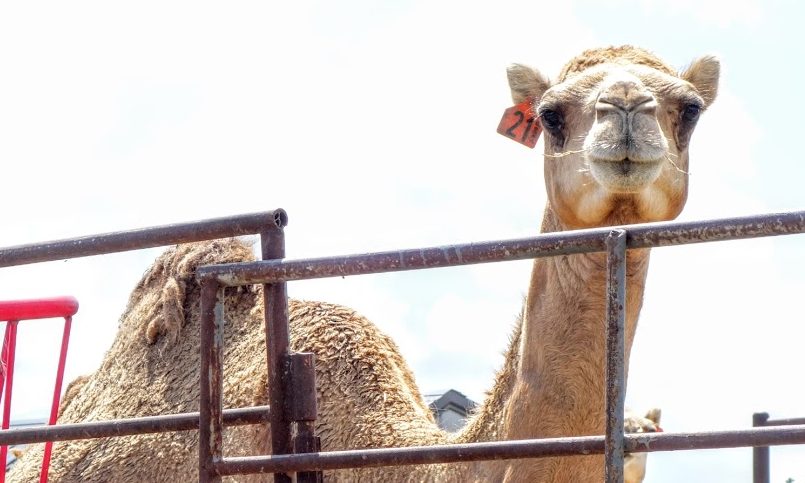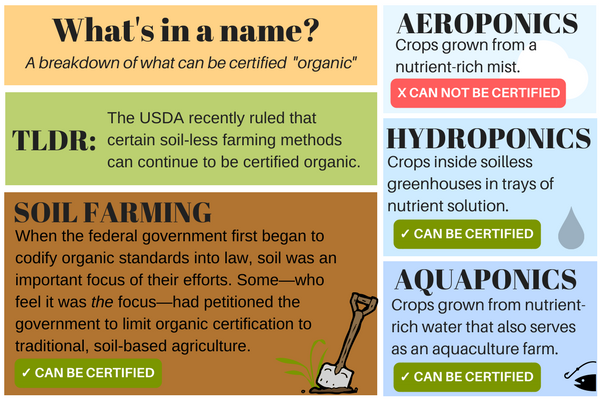It’s time play one of our favorite food-biz games: What should USDA do?
Here’s today’s premise: Back in 2014, Congress decided it wanted to improve poor people’s access to healthful food, so it included a provision in the 2014 Farm Bill modifying the Supplemental Nutritional Assistance Program (SNAP). To a civilian, the changes don’t look enormous:
- The law used to require SNAP-eligible stores to stock at least three items in each of four categories of staple food (dairy products; breads and cereals; meats, poultry, and fish; and fruits and vegetables), with perishable items included in at least two categories. Under the new law, stores have to have at least seven different items in each of the categories, and perishable items in at least three categories
- Foods that are combinations of ingredients can be counted in only one category—so a frozen pizza can count as dairy, but not as bread or meat or vegetable
- To keep restaurants out of the program, any establishment that gets more than 15 percent of its profits from hot, ready-to-eat food is excluded
Simple, right?
Well, of course not. If you’re a regulator, you’re all too aware of the ways people try to elude the intent of a law. So you’ve got to turn the law into rules that close the loopholes. So here’s what USDA did in creating a proposed set of rules.
First, about those rules on variety. USDA didn’t lay out its logic, but it obviously went something like this: If retailers aren’t already selling a variety of foods, it’s probably because they think no one will buy them. They’ve got a lot of incentive to do the minimum. You don’t want the seven dairy items, for instance, to be cheese pizza, sausage pizza, pepperoni pizza, mushroom pizza, onion pizza, milk, and yogurt. If you’re stocking vacuum packs of roast turkey slices, you don’t get to count a frozen turkey burger.
Next, depth of stocking. You don’t want a store laying in one can of tuna, one can of Spam, an apple, and a banana, and sticking them somewhere out of sight, and claiming that it is offering a broader, healthier stock. So the agency made a new rule: Stores have to have at least six of every item they’re claiming under the variety rules on the shelf at all times.
Those multi-ingredient processed foods—the pizzas and soups and canned stews? They’re not really in line with the purpose of SNAP, which is to help people buy ingredients that they can prepare for themselves at home. We don’t necessarily want people spending their SNAP dollars on hyper-processed products in first place, so why should they get to count against the variety requirements? USDA rules that now, while you can stock all these items and get paid in SNAP dollars, you can’t count them against your variety requirements at all.
Easy peasy. Just type those new rules up, publish them in the Federal Register, and wait for the compliments to pour in. Finally, even though it is illegal to use SNAP benefits for hot food, you can never be too sure. So, in the future, any establishment that makes 15 percent of its profits from items “cooked or heated on site before or after purchase” is ineligible.
Or not. For the past few weeks, a well-orchestrated floor of comments has been pouring into USDA criticizing the new rules, mostly from convenience stores who correctly see themselves as a crucial link in getting food to many vulnerable consumers, and who say they’ll mostly have to drop out if the rules go through. (The black congressional caucus and a number of individual legislators and trade organizations have been laying into the revision. This, say the congressmen, is not what we intended.)
Yeah, OK. But you’ll forgive the rest of us for remembering the Farm Bill’s reputation as being stuffed full of whatever motions were lying around on Capitol Hill when the deadline crunch was on. Besides, it’s easy to pass a law without worrying too much about exactly what you’re trying to accomplish and exactly what it will take to achieve it. That’s why we have regulatory agencies: so congressmen have somebody to yell at when they themselves have screwed up. In the blame game, let’s call it a draw.
But that leaves the question of what to do about the rules. From the comments submitted to the agency, it looks like the killer provision is the rule about hot food. A lot of convenience stores are co-located with various kinds of food-service operations, and the the stores’ economics skew in favor of the restaurant portion of the business. But even among the straight-ahead convenience stores, many argue that the 15 percent cutoff is unreasonable. It’s pretty clear that they don’t like the stocking rules either. I didn’t see anyone come right out and say it, but the underlying attitude is obvious: “We’re cramming 2,500 SKUs into a tiny little store. You want us to add up to 28 more. And the truth is, if we had any hope of selling them profitably, we would have stocked the long ago.”
So here’s the question: If you were in charge, what would you do?:
- Back off on everything, figuring that access to some good food trumps the plan of forcing stores to upgrade their offerings
- Fine-tune the variety rules. Maybe let stores count a couple of kinds of cheeses or a couple of forms of chicken rather than just one. Or maybe give a little more latitude for multi-ingredient processed food
- Hang tough, either because it’s the right thing to do, or because you figure that between Donald Trump and Paul Ryan, SNAP’s days are numbered.
You can compare your choice with USDA’s later this year.












